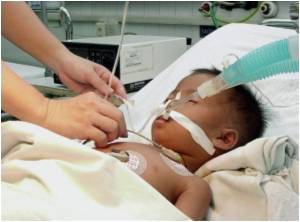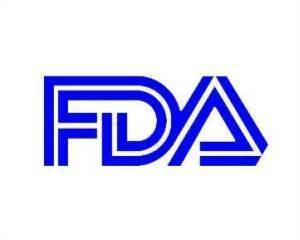WHO and Unicef unite to form a Global Action Plan as an effort to end two major preventable killer diseases, pneumonia and diarrhoea.

The report, which includes up-to-date strategies and makes recommendations to various countries on interventions needed to reduce child deaths significantly, was released Friday. It also includes an example from India on how private players can be involved for better quality care.
Around the world, pneumonia and diarrhoea account for 29 percent of all child deaths below the age of five, and result in the loss of two million lives each year.
The goal is ambitious but achievable: to end preventable childhood deaths due to pneumonia and diarrhoea by 2025. The momentum needed to achieve such a goal already exists, the report said.
Naveen Thacker, standing committee member of the International Paediatric Association said: "We know what happens when the world comes together to take on killer diseases. We have eliminated the threat of small pox and we are drawing close to eradicating polio. Pneumonia and diarrhoea could be next, if we come together again to take action by implementing the integrated approach laid out in the GAPPD."
The solution to tackle these two health challenges does not lie in any major advance in technology. Children are dying because services are provided piecemeal and those most at risk are not being reached. Use of effective interventions remains too low; for instance only 39 percent of babies less than six months are exclusively breastfed, while only 60 percent with suspected pneumonia access appropriate care, the report said.
Advertisement
Children who are poor, hungry and living in remote areas are more likely to be visited by these 'forgotten killers' and the burden placed by pneumonia and diarrhoea on families and health systems further aggravate existing inequalities, the report stressed.
Advertisement
Some of the interventions with proven efficacy are exclusive breastfeeding of a child for the first six months; appropriate vaccinations against Streptococcus pneumoniae and Haemophilus influenza type b, measles and pertusis; oral rehydration salts (ORS) as treatment during diarrhoea; water, sanitation and hygiene interventions; reduction of household air pollution with improved stoves, and the like.
In the Indian context, Madhumita Dobe, chairperson for the Indian Academy of Public Health (IAPH), said that access to clean water, sanitation, and hygiene (WASH) remains a persistent problem.
"Diarrhoeal disease is largely preventable and improving access to WASH can play a huge role in preventing the condition, alongside treatment with oral rehydration solution and safe and healthy feeding processes," Dobe said.
By involving care providers, especially frontline health workers and communities, the integrated global plan hopes to reduce mortality from pneumonia in children below five to fewer than three per 1,000 live births, and from diarrhoea to fewer than one per 1,000 live births by 2025.
To reach these goals, other targets must be achieved, and the plan has outlined these - 90 percent full-dose coverage of all relevant vaccines, 90 percent access to pneumonia and diarrhoea case management, at least 50 percent coverage of exclusive breastfeeding during first six months of an infant's life and virtual elimination of paediatric HIV.
At the country level, GAPPD recommends development of a clear strategy and work plan to achieve the goals set, such as generating political will, developing and updating a situation analysis of pneumonia and diarrhoea, collaboration with private sector, academia and civil society and identifying groups at greater risk.
It also recommends that a national working group for pneumonia and diarrhoea prevention be designated and promote innovations to overcome barriers to service delivery.
The report also highlights an example from India on how the informal private sector can be used to improve quality of care. The Point-of-Use Water Disinfection and Zinc Treatment (POUZN) project in Uttar Pradesh identified and trained 2,000 rural medical practioners (RMPs) and 500 drug sellers through local NGOs to provide zinc and ORS is rural areas. These unlicensed providers treat 63 percent children under three who suffer from diarrhoea.
"Creating such a bridge encourages companies to commit to a new market as it gives them the economic incentive to become active in underserved areas. It also helps rural providers to learn about and have access to zinc and other health products," the report said.
"The targets of GAPPD will not be achieved without urgent action by national governments as well as supporting partners at the global level. This document calls on all concerned groups to demonstrate their commitment, allocate resources and work together to make preventable child deaths due to pneumonia and diarrhoea a tragedy of the past," it concludes.










